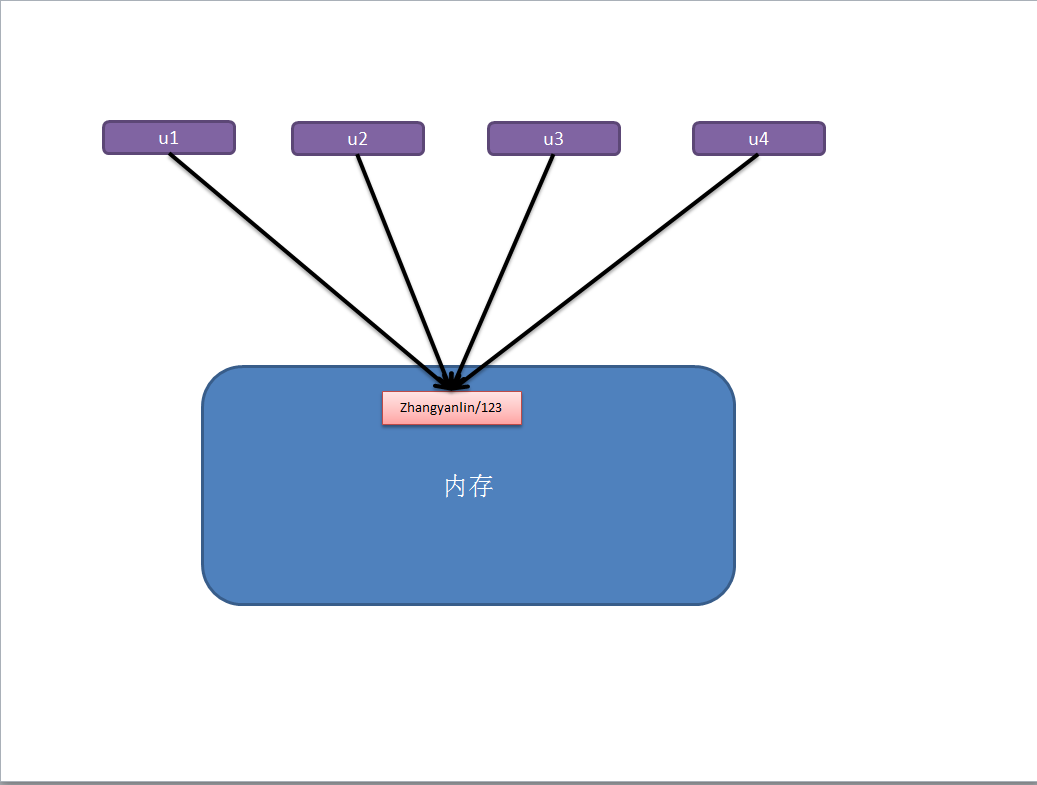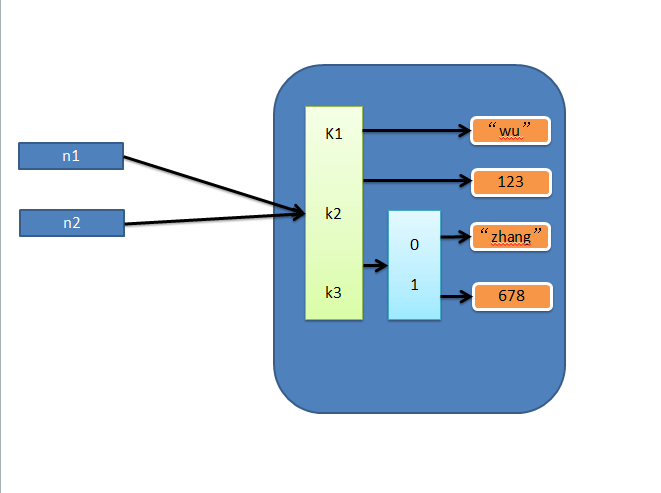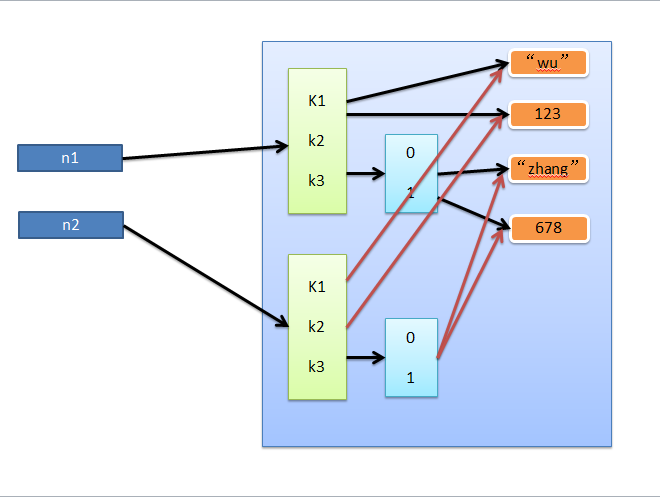1、Set基本数据类型
a、set集合,是一个无序且不重复的元素集合
class set(object):
"""
set() -> new empty set object
set(iterable) -> new set object
Build an unordered collection of unique elements.
"""
def add(self, *args, **kwargs): # real signature unknown
"""
Add an element to a set,添加元素
This has no effect if the element is already present.
"""
pass
def clear(self, *args, **kwargs): # real signature unknown
""" Remove all elements from this set. 清楚内容"""
pass
def copy(self, *args, **kwargs): # real signature unknown
""" Return a shallow copy of a set. 浅拷贝 """
pass
def difference(self, *args, **kwargs): # real signature unknown
"""
Return the difference of two or more sets as a new set. A中存在,B中不存在
(i.e. all elements that are in this set but not the others.)
"""
pass
def difference_update(self, *args, **kwargs): # real signature unknown
""" Remove all elements of another set from this set. 从当前集合中删除和B中相同的元素"""
pass
def discard(self, *args, **kwargs): # real signature unknown
"""
Remove an element from a set if it is a member.
If the element is not a member, do nothing. 移除指定元素,不存在不保错
"""
pass
def intersection(self, *args, **kwargs): # real signature unknown
"""
Return the intersection of two sets as a new set. 交集
(i.e. all elements that are in both sets.)
"""
pass
def intersection_update(self, *args, **kwargs): # real signature unknown
""" Update a set with the intersection of itself and another. 取交集并更更新到A中 """
pass
def isdisjoint(self, *args, **kwargs): # real signature unknown
""" Return True if two sets have a null intersection. 如果没有交集,返回True,否则返回False"""
pass
def issubset(self, *args, **kwargs): # real signature unknown
""" Report whether another set contains this set. 是否是子序列"""
pass
def issuperset(self, *args, **kwargs): # real signature unknown
""" Report whether this set contains another set. 是否是父序列"""
pass
def pop(self, *args, **kwargs): # real signature unknown
"""
Remove and return an arbitrary set element.
Raises KeyError if the set is empty. 移除元素
"""
pass
def remove(self, *args, **kwargs): # real signature unknown
"""
Remove an element from a set; it must be a member.
If the element is not a member, raise a KeyError. 移除指定元素,不存在保错
"""
pass
def symmetric_difference(self, *args, **kwargs): # real signature unknown
"""
Return the symmetric difference of two sets as a new set. 对称交集
(i.e. all elements that are in exactly one of the sets.)
"""
pass
def symmetric_difference_update(self, *args, **kwargs): # real signature unknown
""" Update a set with the symmetric difference of itself and another. 对称交集,并更新到a中 """
pass
def union(self, *args, **kwargs): # real signature unknown
"""
Return the union of sets as a new set. 并集
(i.e. all elements that are in either set.)
"""
pass
def update(self, *args, **kwargs): # real signature unknown
""" Update a set with the union of itself and others. 更新 """
pass
b、数据类型模块举例
se = {11,22,33,44,55}
be = {44,55,66,77,88}
# se.add(66)
# print(se) #添加元素,不能直接打印!
#
#
#
# se.clear()
# print(se) #清除se集合里面所有的值,不能清除单个
#
#
#
# ce=be.difference(se) #se中存在,be中不存在的值,必须赋值给一个新的变量
# print(ce)
#
#
# se.difference_update(be)
# print(se) #在se中删除和be相同的值,不能赋值给一个新的变量,先输入转换,然后打印,也不能直接打印!
# se.discard(11)
# print(se) #移除指定元素,移除不存在的时候,不会报错
# se.remove(11)
# print(se) #移除指定的元素,移除不存在的会报错
# se.pop()
# print(se) #移除随机的元素
#
#
# ret=se.pop()
# print(ret) #移除元素,并且可以把移除的元素赋值给另一个变量
# ce = se.intersection(be)
# print(ce) #取出两个集合的交集(相同的元素)
# se.intersection_update(be)
# print(se) #取出两个集合的交集,并更新到se集合中
# ret = se.isdisjoint(be)
# print(ret) #判断两个集合之间又没有交集,如果有交集返回False,没有返回True
# ret=se.issubset(be)
# print(ret) #判断se是否是be集合的子序列,如果是返回True,不是返回Flase
# ret = se.issuperset(be)
# print(ret) #判断se是不是be集合的父序列,如果是返回True,不是返回Flase
# ret=se.symmetric_difference(be)
# print(ret) #对称交集,取出除了不相同的元素
# se.symmetric_difference_update(be)
# print(se) #对称交集,取出不相同的元素并更新到se集合中
# ret = se.union(be)
# print(ret) #并集,把两个元素集合并在一个新的变量中
2、深浅拷贝
a、数字和字符串
对于 数字 和 字符串 而言,赋值、浅拷贝和深拷贝无意义,因为其永远指向同一个内存地址。
import copy # ######### 数字、字符串 ######### n1 = 123 # n1 = "i am alex age 10" print(id(n1)) # ## 赋值 ## n2 = n1 print(id(n2)) # ## 浅拷贝 ## n2 = copy.copy(n1) print(id(n2)) # ## 深拷贝 ## n3 = copy.deepcopy(n1) print(id(n3))

b、其他基本数据类型
对于字典、元祖、列表 而言,进行赋值、浅拷贝和深拷贝时,其内存地址的变化是不同的。
1、赋值
赋值,只是创建一个变量,该变量指向原来内存地址,如:
n1 = {"k1": "zhangyanlin", "k2": 123, "k3": ["Aylin", 456]}
n2 = n1

2、浅拷贝
浅拷贝,在内存中只额外创建第一层数据
import copy
n1 = {"k1": "zhangyanlin", "k2": 123, "k3": ["aylin", 456]}
n3 = copy.copy(n1)
3、深拷贝
深拷贝,在内存中将所有的数据重新创建一份(排除最后一层,即:python内部对字符串和数字的优化)

3、函数
函数式:将某功能代码封装到函数中,日后便无需重复编写,仅调用函数即可
面向对象:对函数进行分类和封装,让开发“更快更好更强...
.函数的定义主要有如下要点:
def:表示函数的关键字
函数名:函数的名称,日后根据函数名调用函数
函数体:函数中进行一系列的逻辑计算,如:发送邮件、计算出 [11,22,38,888,2]中的最大数等...
参数:为函数体提供数据
返回值:当函数执行完毕后,可以给调用者返回数据。
1、返回值
函数是一个功能块,该功能到底执行成功与否,需要通过返回值来告知调用者。
以上要点中,比较重要有参数和返回值:
def 发送短信():
发送短信的代码...
if 发送成功:
return True
else:
return False
while True:
# 每次执行发送短信函数,都会将返回值自动赋值给result
# 之后,可以根据result来写日志,或重发等操作
result = 发送短信()
if result == False:
短信发送失败...
函数的有三中不同的参数:
普通参数
# ######### 定义函数 #########
# name 叫做函数func的形式参数,简称:形参
def func(name):
print name
# ######### 执行函数 #########
# 'zhangyanlin' 叫做函数func的实际参数,简称:实参
func('zhangyanlin')
默认参数
def func(name, age = 18):
print "%s:%s" %(name,age)
# 指定参数
func('zhangyanlin', 19)
# 使用默认参数
func('nick')
注:默认参数需要放在参数列表最后
动态参数
def func(*args): print args # 执行方式一 func(11,33,4,4454,5) # 执行方式二 li = [11,2,2,3,3,4,54] func(*li)
def func(**kwargs):
print args
# 执行方式一
func(name='wupeiqi',age=18)
# 执行方式二
li = {'name':'wupeiqi', age:18, 'gender':'male'}
func(**li)
def func(*args, **kwargs): print args print kwargs
邮件实例:
def email(p,j,k):
import smtplib
from email.mime.text import MIMEText
from email.utils import formataddr
set = True
try:
msg = MIMEText('j', 'plain', 'utf-8') #j 邮件内容
msg['From'] = formataddr(["武沛齐",'wptawy@126.com'])
msg['To'] = formataddr(["走人",'424662508@qq.com'])
msg['Subject'] = "k" #k主题
server = smtplib.SMTP("smtp.126.com", 25)
server.login("wptawy@126.com", "WW.3945.59")
server.sendmail('wptawy@126.com', [p], msg.as_string())
server.quit()
except:
set = False
return True
formmail = input("请你输入收件人邮箱:")
zhuti = input("请您输入邮件主题:")
neirong = input("请您输入邮件内容:")
aa=email(formmail,neirong,zhuti)
if aa:
print("邮件发送成功!")
else:
print("邮件发送失败!")
 Pythonの融合リスト:適切な方法を選択しますMay 14, 2025 am 12:11 AM
Pythonの融合リスト:適切な方法を選択しますMay 14, 2025 am 12:11 AMTomergelistsinpython、あなたはオペレーター、extendmethod、listcomfulting、olitertools.chain、それぞれの特異的advantages:1)operatorissimplebutlessforlargelist;
 Python 3の2つのリストを連結する方法は?May 14, 2025 am 12:09 AM
Python 3の2つのリストを連結する方法は?May 14, 2025 am 12:09 AMPython 3では、2つのリストをさまざまな方法で接続できます。1)小さなリストに適したオペレーターを使用しますが、大きなリストには非効率的です。 2)メモリ効率が高い大規模なリストに適した拡張方法を使用しますが、元のリストは変更されます。 3)元のリストを変更せずに、複数のリストをマージするのに適した *オペレーターを使用します。 4)Itertools.chainを使用します。これは、メモリ効率が高い大きなデータセットに適しています。
 Python Concatenateリスト文字列May 14, 2025 am 12:08 AM
Python Concatenateリスト文字列May 14, 2025 am 12:08 AMJoin()メソッドを使用することは、Pythonのリストから文字列を接続する最も効率的な方法です。 1)join()メソッドを使用して、効率的で読みやすくなります。 2)サイクルは、大きなリストに演算子を非効率的に使用します。 3)リスト理解とJoin()の組み合わせは、変換が必要なシナリオに適しています。 4)redoce()メソッドは、他のタイプの削減に適していますが、文字列の連結には非効率的です。完全な文は終了します。
 Pythonの実行、それは何ですか?May 14, 2025 am 12:06 AM
Pythonの実行、それは何ですか?May 14, 2025 am 12:06 AMpythonexexecutionistheprocessoftransforningpythoncodeintoexecutabletructions.1)interpreterreadSthecode、変換intobytecode、thepythonvirtualmachine(pvm)executes.2)theglobalinterpreeterlock(gil)管理委員会、
 Python:重要な機能は何ですかMay 14, 2025 am 12:02 AM
Python:重要な機能は何ですかMay 14, 2025 am 12:02 AMPythonの主な機能には次のものがあります。1。構文は簡潔で理解しやすく、初心者に適しています。 2。動的タイプシステム、開発速度の向上。 3。複数のタスクをサポートするリッチ標準ライブラリ。 4.強力なコミュニティとエコシステム、広範なサポートを提供する。 5。スクリプトと迅速なプロトタイピングに適した解釈。 6.さまざまなプログラミングスタイルに適したマルチパラダイムサポート。
 Python:コンパイラまたはインタープリター?May 13, 2025 am 12:10 AM
Python:コンパイラまたはインタープリター?May 13, 2025 am 12:10 AMPythonは解釈された言語ですが、コンパイルプロセスも含まれています。 1)Pythonコードは最初にBytecodeにコンパイルされます。 2)ByteCodeは、Python Virtual Machineによって解釈および実行されます。 3)このハイブリッドメカニズムにより、Pythonは柔軟で効率的になりますが、完全にコンパイルされた言語ほど高速ではありません。
 ループvs whileループ用のpython:いつ使用するか?May 13, 2025 am 12:07 AM
ループvs whileループ用のpython:いつ使用するか?May 13, 2025 am 12:07 AMuseaforloopwhenteratingoverasequenceor foraspificnumberoftimes; useawhileloopwhentinuninguntinuntilaConditionismet.forloopsareidealforknownownownownownownoptinuptinuptinuptinuptinutionsituations whileoopsuitsituations withinterminedationations。
 Pythonループ:最も一般的なエラーMay 13, 2025 am 12:07 AM
Pythonループ:最も一般的なエラーMay 13, 2025 am 12:07 AMpythonloopscanleadtoErrorslikeinfiniteloops、ModifiningListsDuringiteration、Off-Oneerrors、Zero-dexingissues、およびNestededLoopinefficiencies.toavoidhese:1)use'i


ホットAIツール

Undresser.AI Undress
リアルなヌード写真を作成する AI 搭載アプリ

AI Clothes Remover
写真から衣服を削除するオンライン AI ツール。

Undress AI Tool
脱衣画像を無料で

Clothoff.io
AI衣類リムーバー

Video Face Swap
完全無料の AI 顔交換ツールを使用して、あらゆるビデオの顔を簡単に交換できます。

人気の記事

ホットツール

SAP NetWeaver Server Adapter for Eclipse
Eclipse を SAP NetWeaver アプリケーション サーバーと統合します。

SublimeText3 英語版
推奨: Win バージョン、コードプロンプトをサポート!

SecLists
SecLists は、セキュリティ テスターの究極の相棒です。これは、セキュリティ評価中に頻繁に使用されるさまざまな種類のリストを 1 か所にまとめたものです。 SecLists は、セキュリティ テスターが必要とする可能性のあるすべてのリストを便利に提供することで、セキュリティ テストをより効率的かつ生産的にするのに役立ちます。リストの種類には、ユーザー名、パスワード、URL、ファジング ペイロード、機密データ パターン、Web シェルなどが含まれます。テスターはこのリポジトリを新しいテスト マシンにプルするだけで、必要なあらゆる種類のリストにアクセスできるようになります。

SublimeText3 Mac版
神レベルのコード編集ソフト(SublimeText3)

Safe Exam Browser
Safe Exam Browser は、オンライン試験を安全に受験するための安全なブラウザ環境です。このソフトウェアは、あらゆるコンピュータを安全なワークステーションに変えます。あらゆるユーティリティへのアクセスを制御し、学生が無許可のリソースを使用するのを防ぎます。






